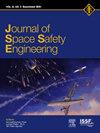载人水下研究站的空间应用
IF 1.7
Q3 ENGINEERING, AEROSPACE
引用次数: 0
摘要
随着载人航天旅行到其他天体表面的新时代,也需要新的模拟可能性。为此目的使用水下栖息地的优点经常被讨论。但是,以前的设施,例如以前的生境、空间模拟任务和训练池,与新的要求相比有各种缺点。有了新一代的水下栖息地,这些缺点可以通过改变设计和使用现有技术来消除。在这里,我们报告了太空和水下极端环境之间的相似之处和局限性。太空中重力的减少类似于栖息地外不同程度的浮力。此外,对物流、技术和人员的压力因素和需求是相似的。为了模拟更长的停留时间,就人为因素而言,需要新的焦点。这包括添加其他模块的能力、更大的可用区域和移动性。美国的水瓶座水下实验室现在只能在有限的程度上满足这些新要求,就像其他大约70个栖息地项目一样,这些项目大多已经停止。在卡拉马尔公园关于欧洲水下研究站的跨学科概念中,满足太空旅行新需求的所有必要要求都得到了实施。本文章由计算机程序翻译,如有差异,请以英文原文为准。
Space applications in manned underwater research stations
With the new era of manned space travel to the surfaces of other celestial bodies, there is also a need for new simulation possibilities. The advantages of using underwater habitats for this purpose have often been discussed. However, previous facilities such as former habitats, space analogue missions, and training pools have various shortcomings in relation to the new requirements. With a new generation of underwater habitats, these shortcomings can be eliminated by changing the design and using current technologies. Here, we report on the similarities and limitations between extreme environments in space and underwater. Reduced gravity in space is similar to different degrees of buoyancy outside the habitat. Furthermore, stress factors and demands on logistics, technology, and personnel are alike. To simulate longer stays, new focal points are required in terms of the human factor. This includes the ability to add other modules, larger usable areas, and mobility. The American underwater laboratory Aquarius is now only suitable to a limited extent for these new requirements, just like the other approximately 70 habitat projects that have mostly been discontinued. In Calamar Park's interdisciplinary concept of a European Underwater Research Station, all those requirements necessary for the new demands of space travel have been implemented.
求助全文
通过发布文献求助,成功后即可免费获取论文全文。
去求助
来源期刊

Journal of Space Safety Engineering
Engineering-Safety, Risk, Reliability and Quality
CiteScore
2.50
自引率
0.00%
发文量
80
 求助内容:
求助内容: 应助结果提醒方式:
应助结果提醒方式:


